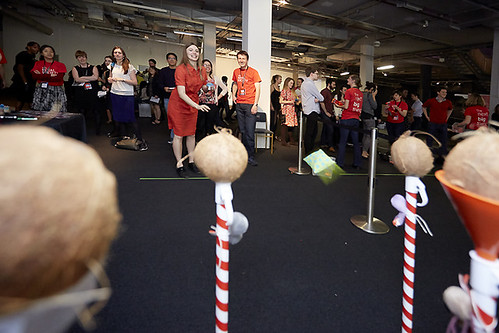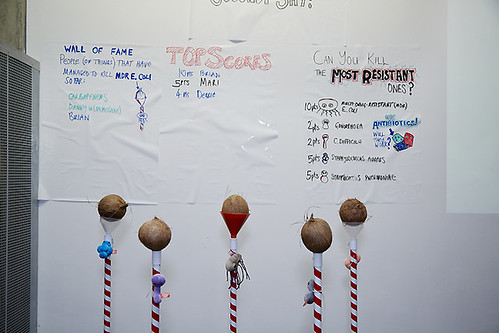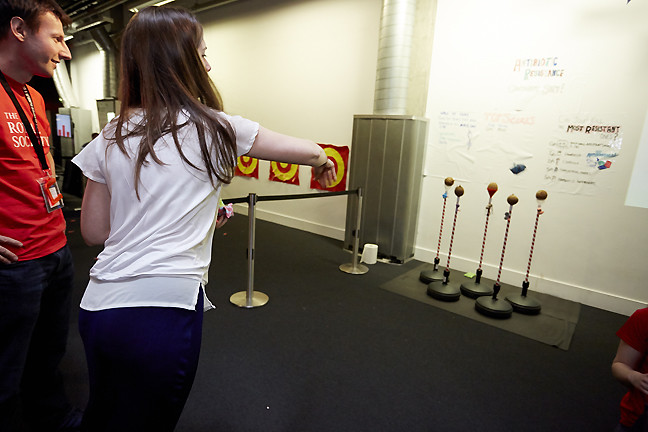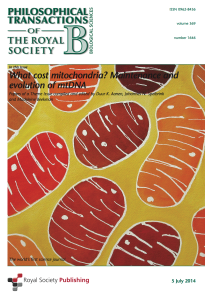Category Archives: royal society
Royal Society Summer Science Exhibition 2020
Royal Society Summer Science Exhibition Stall July 2-8
Oxford Nanopore Technology Demos
 Antibiotic use gives resistance mutants a strong advantage so they rapidly increase in frequency.
Antibiotic use gives resistance mutants a strong advantage so they rapidly increase in frequency.The exhibition runs from Monday 2 July - Sunday 8 July at Carlton House Terrace, London, SW1Y 5AG. For more information about our stall click here and for general visitor information about the exhibition click here. Please spread the word!
During the exhibition we will be tweeting from @ResistanceIF
Our stall is generously supported by Oxford Nanopore Technology, the Nuffield Department of Medicine, and through public engagement research funding awarded to our research groups by the Wellcome Trust, the Royal Society, the National Institute for Health Research, the Oxford Biomedical Research Centre, the Natural Environment Research Council, the Medical Research Council, the Newton Fund and the Bill & Melinda Gates Foundation.
Resistance is Futile: Science Museum Lates and Cheltenham Science Festival



We had two activities. Dance Dance Evolution is a computer game which uses an adapted dance-dance mat with four squares representing bases in the DNA (A, C, G and T). Participants act as the DNA replicator, and mistakes cause mutations in the DNA sequence. The next dancer copies the sequence left by the previous dancer, demonstrating evolution by mutation over time. The game shows the percentage similarity of the current sequence to the original sequence, showing the amount of 'evolution' over the time period of the game. We discussed with visitors the relevance of this to the development of antibiotic resistance.
Our second activity was a coconut shy game, which shows how antibiotic use can select for resistant bacteria. Participants throw bean bags (i.e. antibiotics) at the coconuts (i.e. bacteria) to try and knock (i.e. kill) the coconuts, painted as bacteria, from the shy. However, the antibiotic resistant bacteria (those on the back row) are much harder to knock off. When the susceptible bacteria are knocked off, the frequency of the resistant bacteria increases, displaying how the use of antibiotics can increase the frequency of resistant bacteria.
Ashleigh Griffin's group also had an awesome stall!
Award for best dressed goes to... Ashleigh Griffin! @royalsociety at #smLates pic.twitter.com/1unSnFH6Lz— David Chapman (@Davchap268) June 24, 2015 Royal Society Summer Science Exhibition
Every summer, the Royal Society in London opens their doors to the public for the Summer Science Exhibition – a week-long science fair, where universities and research institutes from across the UK show off some of their coolest and most popular research. The University of Leicester was there with a replica of the skeleton of King Richard III, whom they found buried under a parking lot a few years ago. The National Physical Laboratory and University of Coventry brought some conductive fabrics. The Royal Geographical Society had a block of ice and 3D images to illustrate their work studying glaciers at Mount Everest. And all of this in the beautiful Royal Society building, with paintings of former presidents (Newton!) on the walls and old equipment showcased in the hallways.
There were some talks and events throughout the week as well, but I didn’t make it to the exhibition until Sunday, and only had time to walk past the stands.
Here’s a quick impression of some of the things I saw!
Filed under: Have Science Will Travel Tagged: Royal Society, Summer Science Exhibition
Posted by in Have Science Will Travel, royal society, Summer Science Exhibition
Science Caturday: Distractingly Sexy Kitteh
 Do I even have to mention this week’s top story in science? Nah.
Do I even have to mention this week’s top story in science? Nah.
Filed under: Science Caturday, Uncategorized Tagged: #distractinglysexy, Royal Society, science cat, tim hunt
Posted by in #distractinglysexy, royal society, science cat, science caturday, tim hunt
Mitochondrial Royalty
 Our own Michele Banks provided the cover art for a mitochondria themed issue of Philosophical Transactions of the Royal Society B (B is for Biological Sciences). The Royal Society traces its roots back to 1660. Philosophical Transactions dates back to 1665 and the splitting into A and B dates to 1887
Our own Michele Banks provided the cover art for a mitochondria themed issue of Philosophical Transactions of the Royal Society B (B is for Biological Sciences). The Royal Society traces its roots back to 1660. Philosophical Transactions dates back to 1665 and the splitting into A and B dates to 1887
We could not be prouder of Michele for contributing to the merger of art with this long scientific tradition, nor could we be prouder of the Royal Society for showing excellent taste.
Filed under: The Art of Science Tagged: Artologica, cover art, Michele Banks, mitochondria, Royal Society, The Philosophical Transactions of the Royal Society B
Sir Henry Dale Fellowship
The project addresses the question of how to detect genes or mutations in bacteria responsible for variability in important traits such as the tendency to cause human disease. Focusing on the hospital-associated pathogens Staphylococcus aureus and Clostridium difficile, the project has the potential to help identify genetic variants that explain why some bacteria cause more severe infections, knowledge that could help develop new drugs and tests that improve patient treatment.
The fellowship runs for five years, and includes support for a postdoctoral research assistant and laboratory costs. I will be advertising a position shortly. If you are interested, please get in touch.
I want to thank the funders and reviewers for supporting this project, and my colleagues who helped me write and re-write the research proposal.
Coalescent inference for infectious disease
This paper appears as part of an issue on Next-generation molecular and evolutionary epidemiology of infectious disease, which accompanies a Royal Society discussion meeting organized by Oli Pybus, Christophe Fraser and Andrew Rambaut. The Royal Society has made audio recordings of the talks at this meeting, and the accompanying satellite meeting, available online, including my talk on Bethany's paper.

